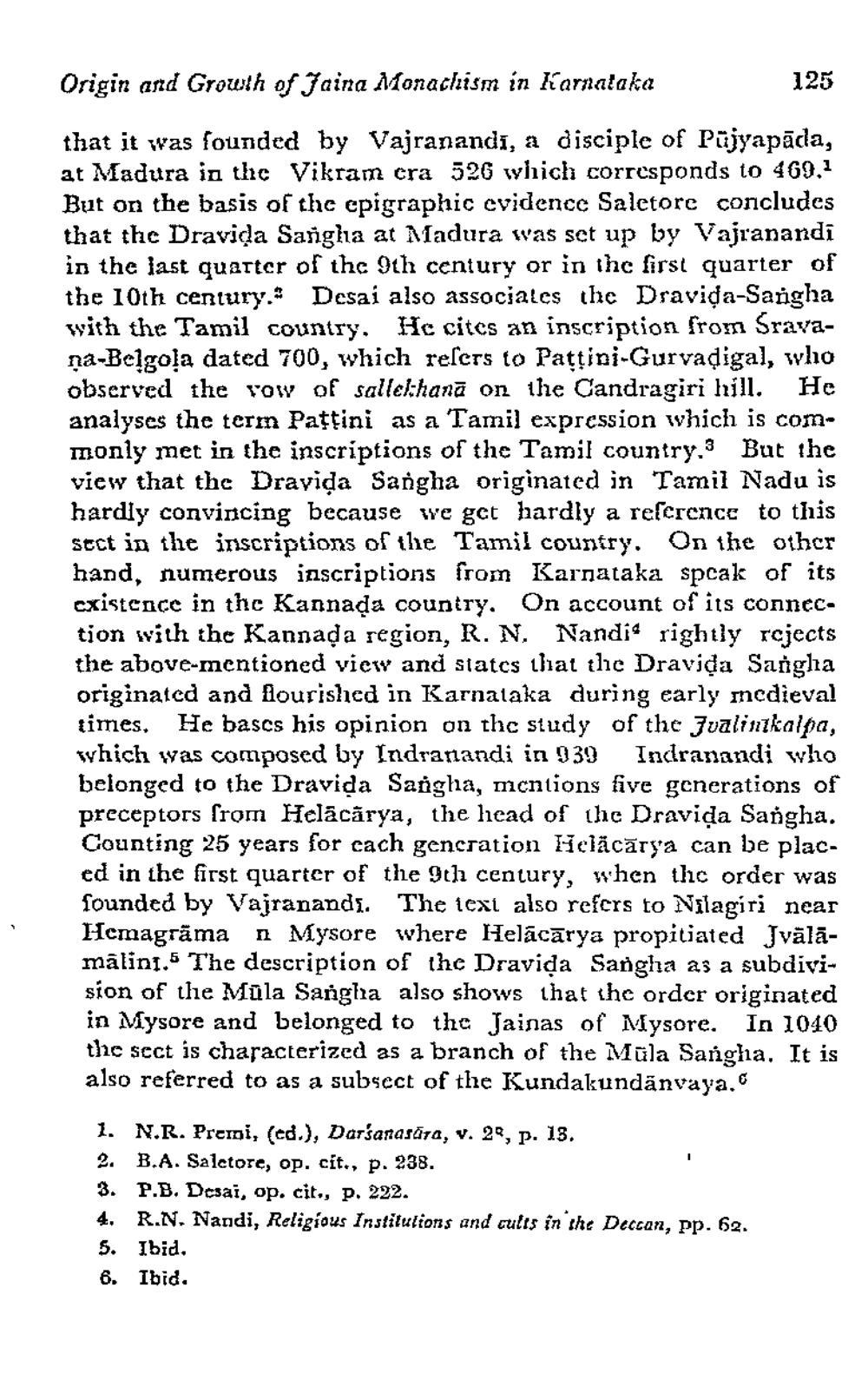________________
Origin and Growth of Jaina Monachism in Karnataka
125
that it was founded by Vajranandi, a disciple of Pūjyapāda, at Madura in the Vikram cra 526 which corresponds to 469.1 But on the basis of the epigraphic evidence Saletore concludes that the Dravida Sangha at Madura was set up by Vajranandi in the last quarter of the 9th century or in the first quarter of the 10th century.* Desai also associales the Dravida-Sangha with the Tamil country. He citcs an inscription from Sravaņa-Bcigola dated 700, which refers to Pattini-Gurvadigal, who observed the row of sallelhana on the Candragiri hill. He analyses the term Pattini as a Tamil expression which is commonly met in the inscriptions of the Tamil country. But the view that the Drayida Sangha originated in Tamil Nadu is hardly convincing because we get hardly a reference to this sect in the inscriptions of the Tamil country. On the other hand, numerous inscriptions from Karnataka speak of its existence in the Kannada country. On account of its connection with the Kannada region, R. N. Nandi“ rightly rejects the above-mentioned view and states that the Dravida Sangha originated and flourished in Karnataka during early mcdieval times. He bases his opinion on thc study of the Jvalinkalpa, which was composed by Indranandi in 939 Indranandi who belonged to the Dravida Sangha, mcntions five generations of preceptors from Helācārya, the head of the Dravida Sangha. Counting 25 years for cach gencration Helācārya can be placed in the first quarter of the 9th century, when the order was founded by Vajranandı. The text also refers to Nilagiri near Hemagräma 1 Mysore where Helācārya propitiated Jvālāmālinı.5 The description of the Dravida Sangha as a subdivision of the Müla Sangha also shows that the order originated in Mysore and belonged to the Jainas of Mysore. In 1040 the scct is characterized as a branch of the Mala Sangha. It is also referred to as a subscct of the Kundakundānvaya.
1. N.R. Prendi, (ed.), Darśanasāra, v. 22, p. 13. 2. B.A. Saletore, op. cit., p. 238. 3. P.B. Desai, op. cit., p. 222. 4. R.N. Nandi, Religious Institutions and cults in the Deccon, pp. 62. 5. Ibid. 6. Ibid.




